





Heather@voluntary-advantage com
Trevor@voluntary-advantage com
Mailing Address
10940 S Parker Rd #257 Parker, Colorado 80134
















Heather@voluntary-advantage com
Trevor@voluntary-advantage com
Mailing Address
10940 S Parker Rd #257 Parker, Colorado 80134









From Paycheck Pressure to Financial Empowerment: How Employers Can Lead the Charge on Financial Wellness
Why Navigating Uncertainty Requires Workforce
Financial Resilience: As Consumer Confidence Dips to a Low, Financial Wellness Offers a Way Through
Thoughts From the Advisory Board
Why You Need “Exercise Red Flag”
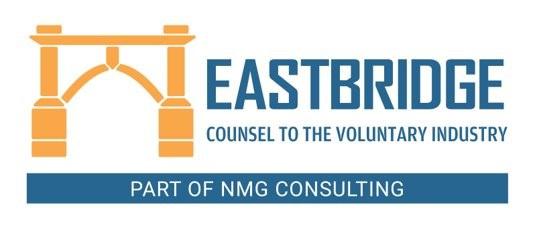

Greetings from all of us here at Voluntary Advantage It's hard to believe we've just concluded our third annual Voluntary Advantage
Conference A heartfelt thank you to our sponsors, speakers, and attendees your support made the event a tremendous success
In this month’s publication, our theme is employee wellbeing. Yes, employee wellbeing is an incredibly broad term. With regards to
this Editor’s Note, I’m going to keep it very simple – it’s about taking care of the policyholder By now, if you’ve followed our publication each month, we hope that you’ve seen our continued messaging around moving all the things we do from creating a product, marketing a product, administering a product, etc , to hopefully re-shifting our marketplace focus on the exact needs of the individual who’s trusting their premium dollars to deliver on this promise at the time they need us most – and that’s at claim time.
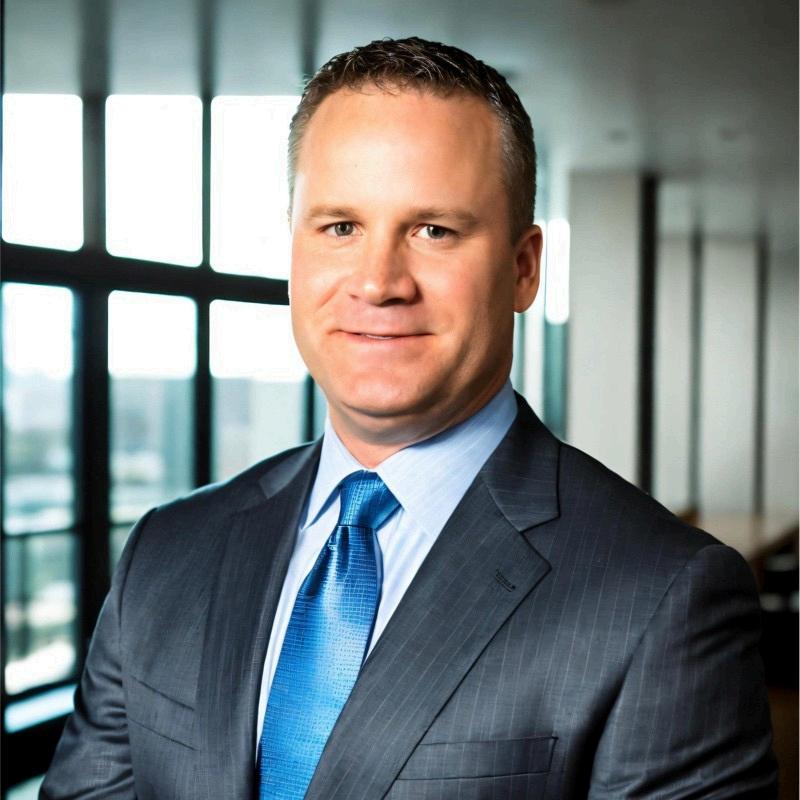
I recently spent time at an industry conference where I had breakfast with a carrier partner who is laser focused on bringing in the right people, a choregraphed administration and claims process where they place the policyholder first in everything they do today. I left that breakfast energized and excited to continue our partnership, as you could absolutely hear the excitement in each team members’ voice as they shared a common mission in elevating our marketplace to a new level
However, this excitement was darkened on the same day, in meeting with a technology partner who shared what they believe is the new way to win business in “shaking down” carrier partners in getting them to redevelop and re-file products that have less benefit and are easier to build onto their platform - as per their quote “it’s really not about the product, it’s really about eliminating the hassle for the employer The lesser the product bells and whistles the better” , and “If we do it correctly, we’ll generate more compensation for the brokerage firm, as we’ll keep the same pricing with less benefits and the carrier will be able to generate more marketing and tech dollars for us all the share!”
Now, I really wish I was kidding but I’m not, and this is still the mindset by some in our marketplace today If you know me, I can promise you I didn’t finish my meal as I professionally explained my position of placing the policyholder first, eliminating subsidies in the future and surely not allowing technology firms to build out product that only fits their given set of needs Now, my clarity of communication at this dinner nor, this editor’s note will revolutionize our market It takes an army of professionals who share a common mission of doing things the right way If we all continue to place the policyholder first, our mission here at Voluntary Advantage and our entire marketplace, will be something we can all be very proud to be apart of long after we exit and hand it to the next generation of bright minds who are excited to continue its growth and incredible impact we have on our policyholders and their loved ones for generations to come.

By Eastbridge Consulting Group
Workplace wellness may seem like a fairly
recent buzzword, but the idea actually has
been buzzing around corporate America for
more than a century National Cash Register
employees met for pre-work horseback rides
in the 1880s and enjoyed twice-daily exercise
breaks, according to Corporate Wellness
Magazine Hershey Foods built a recreation
complex for employees in the 1930s, and
business leaders in the wake of World War II
saw the value of their employees staying fit, at least at the executive level It only makes
sense that healthy workers are more
productive, and some research shows they
also may be more likely to stay in their jobs, as
the focus on employee wellbeing makes
them feel valued and leads to higher morale.
Workplace wellness has expanded far beyond
those early beginnings to become an
essential part of employee benefit programs
In fact, virtually all carriers surveyed for
Eastbridge’s recent “Voluntary Wellness
Benefits” Frontline™ Report offer a wellness benefit with at least one voluntary product
Nearly all offer a wellness benefit with their accident product, 88% include it with their
critical illness product and 83% provide it with
hospital indemnity/supplemental medical
coverage Some carriers (40%) also offer a wellness benefit with cancer coverage
Carriers typically offer wellness benefits as
optional coverage rather than building them
into their plans.
These benefits include family members, too:
Nearly all carriers we surveyed offer wellness
benefits for spouses and dependents, and most plans allow everyone covered to collect
wellness benefits on each product they’re
enrolled in, usually without imposing family
maximum limits other than the maximum
number of benefits for each insured
Expanding Coverage
That’s not to say all wellness benefits are
created equal The number of tests and
screenings carriers’ plans cover varies widely from 9 to 68, averaging 37 Some of the most
common are blood tests for cholesterol and
triglycerides, mammograms, chest x-rays,
colonoscopies, Pap smears, prostate cancer
screenings and stress tests, and some plans
also cover dental and vision exams,
immunizations, smoking cessation and
weight control programs, skin cancer
screenings and other preventive tests.
And the list is growing. About a third of
carriers surveyed have added more wellness
tests in the last two or three years, including
annual physical exams, COVID-19 screenings,
genetic testing, mental health screenings
and well-child exams
Clearly, carriers see the value in catching
problems earlier while they’re easier to treat,
are more likely to have positive outcomes
and yes, claims are less costly
Improving Utilization
If there’s one aspect of wellness benefits that
carriers seem less than pleased with, it’s
utilization Many carriers don’t track the
number of insureds with wellness benefits
who file claims, and the numbers vary widely
from just 2% to 66% for those that do, but on
average only about 20% of employees and
family members with wellness benefits
actually use them Most carriers say utilization
doesn’t vary by product, but those who do cite
differences say utilization is highest for
wellness benefits on critical illness or accident
products.
Low utilization could be tied to low awareness.
Several carriers remind employees about their
wellness benefits primarily during the
enrollment process, but about half of carriers
continue to promote wellness benefits after
the enrollment. Others offer customizable
communication campaigns to all customers or on a case-by-case basis
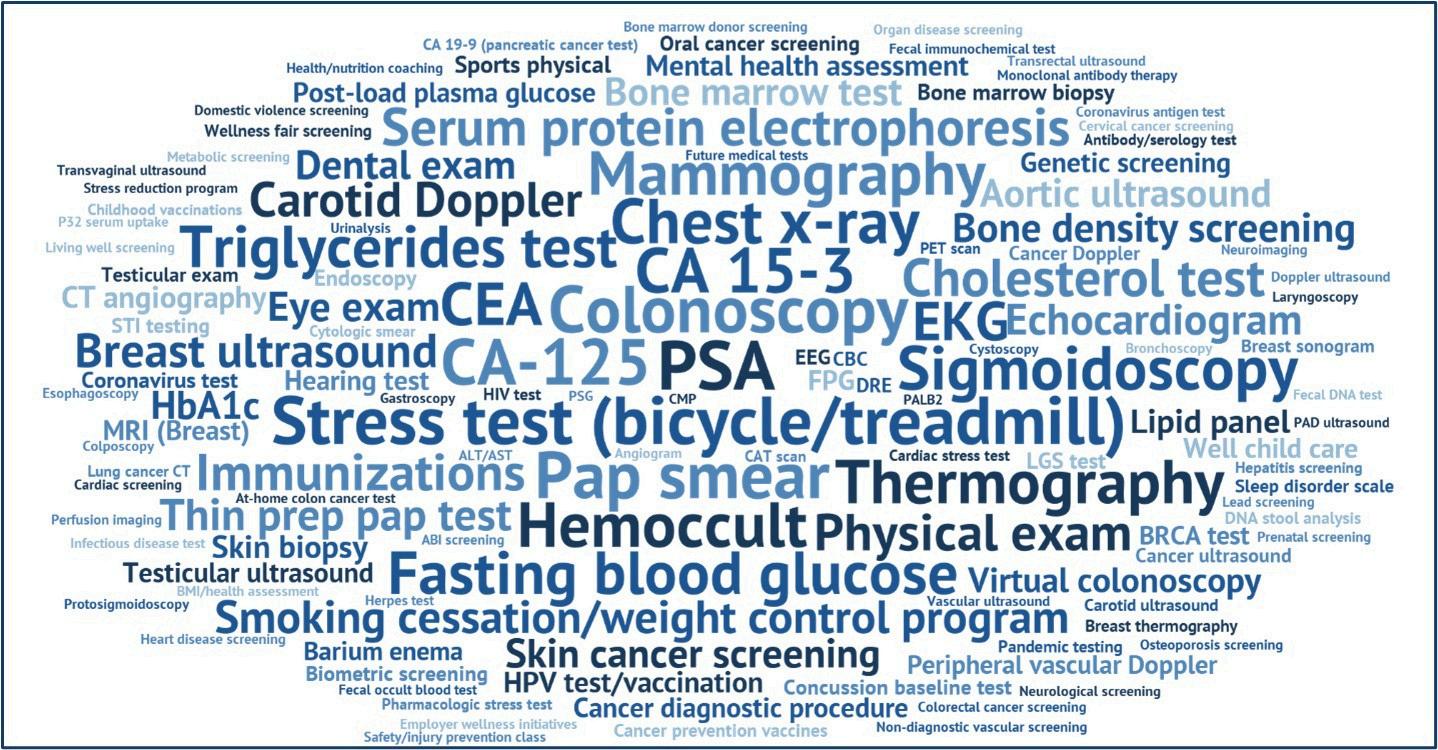
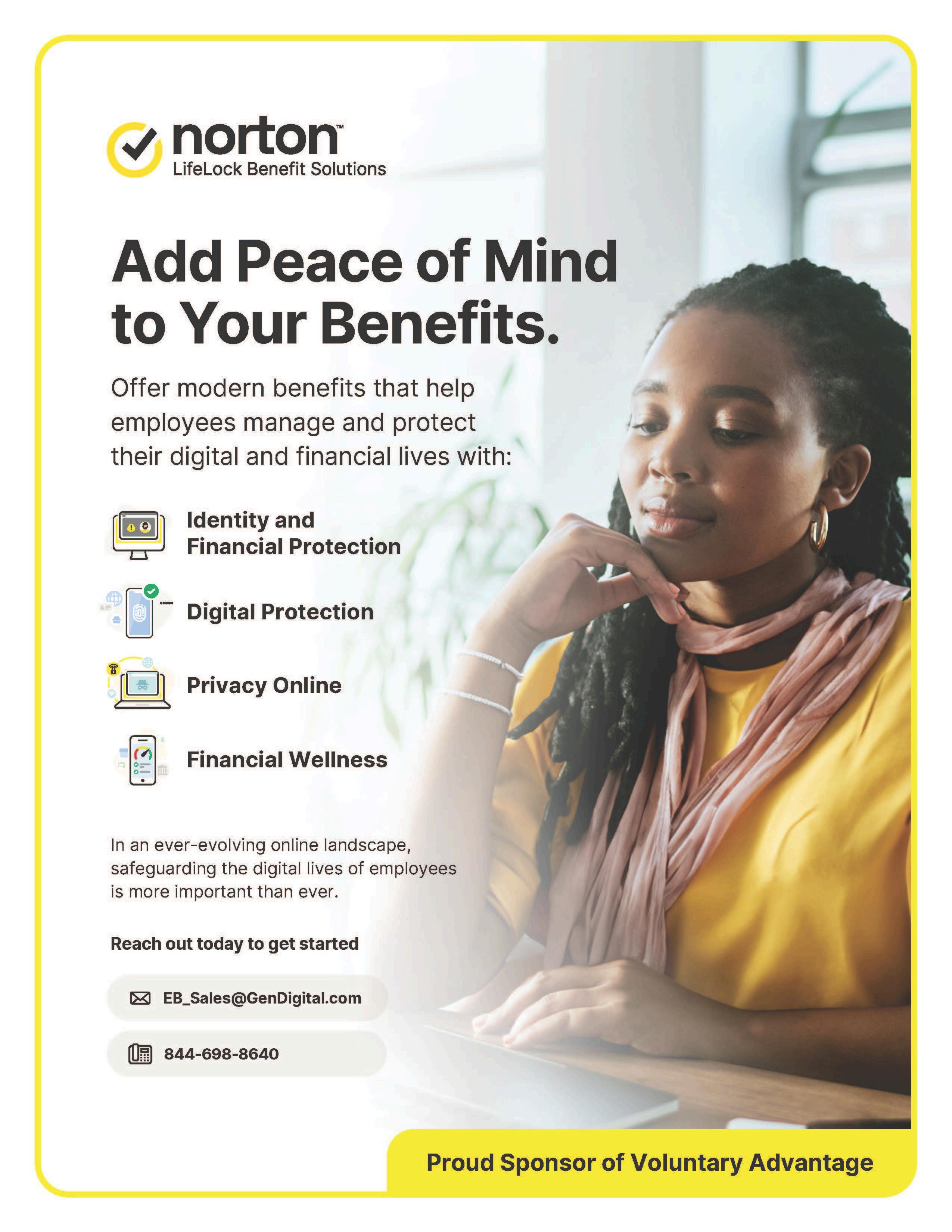
The Role of Virtual Solutions
Virtual mental health platforms are integral to
preventive care:
Accessibility: Employees can access
resources anytime, making it easier to
integrate preventive practices into their
routines
Variety of Tools: From meditation guides to
interactive modules, virtual platforms offer
diverse resources to cater to different needs
On-Demand Counseling: Short-term and
immediate support options help employees
address stressors before they become larger
issues
A KFF Health Tracking Poll from 2024 found
that 43% of U S adults have delayed or gone
without mental health care due to cost
concerns. (kff.org) Virtual mental health
programs help bridge this gap by providing
more affordable and accessible support.
Guidance for Brokers
To promote preventive mental health care:
Educate Clients: Highlight the benefits of
shifting from reactive to proactive mental
health strategies
Suggest Virtual Platforms: Recommend
digital solutions that offer mental wellness tools, coaching, and early intervention resources
Encourage Year-Round Communication:
Help clients develop ongoing messaging campaigns to promote mental health benefits before crises occur
Support Utilization Strategies: Work with
HR teams to ensure employees are aware of
and engaged with their mental health benefits.
Employers who prioritize proactive mental
health solutions foster a healthier, more engaged workforce while reducing the costs
associated with absenteeism, turnover, and lost productivity. As a benefits broker, you can be the catalyst for this shift helping your clients
move beyond crisis management to true mental wellness support

PES Benefits is dedicated to
revolutionizing the employee benefits
landscape with cutting-edge
technology, administration, education,
and virtual care solutions. Since its
inception, PES Benefits has focused on
simplifying the benefits experience,
making it more accessible and
meaningful for all involved


By Heather & Trevor Garbers
In today’s economic climate, financial stress
has become an all-too-common part of daily
life From rising living costs and record levels
of personal debt to economic uncertainty
and stagnant wages, many individuals are
struggling to manage their financial health.
Most recently the Federal Government
announced that it will resume collections on defaulted federal student loan debt on May
Employers who recognize this shift and invest in comprehensive financial wellness resources are
not only supporting their employees' well-being
they’re also strengthening their workforce
and driving long-term business success.
But are employers actually seeing the strain and
what can they do to help their employees with
solutions that actually show results? We have
5 – impacting an estimated 5 million borrowers who have not made a payment in 360+ days, and an additional 4 million who
are in late-stage delinquency and have not made a payment in 91-180 days th
This strain doesn’t just impact personal wellbeing it carries over into the workplace, affecting productivity, engagement, and overall morale As a result, financial wellness
is no longer a personal issue alone; it's an organizational priority
interviewed Meghan Pistritto - Vice President,
Product Lead for Disability, State Paid Leaves and Holistic Well-Being with Prudential
Financial; Russ Norris - Head of Worksite
Distribution Strategy with MassMutual; and
Brian Harrison - President, Head of Consumer
Product at SAVVI Financial, to learn more about what they are seeing in the marketplace today
What is the overall state of employee
financial wellness today?
Russ: Employee financial wellness is under
real strain. As of March 2025, our Workforce
Financial Stability Score fell to 54.4, reflecting
a sharp drop in sentiment compared to earlier in the year. Employers are looking for
benefit solutions that enhance employee
financial wellness in both the near term and
the long term
Brian: A recent Credit Karma study found
that 70% of Americans have financial regrets
from 2024, with not saving enough topping
the list According to SAVVI’s upcoming
“Blindfolded Benefits” study*: nearly 1 in 5
employees (19%) say their benefits have
created financial stress, and 29% have
dipped into savings to cover health costs in
the past year, while 16% have gone into debt
It’s not just about wanting bigger paychecks
many employees simply haven’t had the
support or resources to budget properly,
build emergency savings, or pay down debt.
A full 44% lack confidence in their ability to
recreate their paycheck in retirement, and
33% don’t even know if they are on the right
track. Additionally, with nearly a quarter of
households still living paycheck to paycheck
and inflation adding extra pressure, it’s no
surprise that financial stress is weighing
heavily on workers The need for better tools,
education, and real support around financial
wellness has never been more urgent And
the workplace may be the only place they
can receive the financial guidance they
need
The need for better tools, education, and real support around financial wellness has never been more urgent. And the workplace may be the only place they can receive the financial guidance they need.
Brian Harrison
How big of an issue is financial stress
on employees in the workforce? Are
there certain demographics or
industries that are seeing higher than
normal stress?
Meghan: According to Prudential’s recently
released Benefits & Beyond study, employers
and employees agree financial stress is the
No. 1 employee concern – but employers can
underestimate how much employees
struggle with handling everyday expenses
and living paycheck to paycheck. And while
many employees are experiencing financial
stress, certain demographics tend to be
more affected than others Younger
employees often face significant financial
stress due to student loan debt, housing
costs, and lower initial salaries Lower-
income workers typically experience greater
financial stress due to difficulties meeting
basic living expenses Financial wellness
programs can help support these
employees, improving satisfaction and
retention
Brian: In today’s economic landscape, it is
very common for all demographics and
industries to be experiencing financial stress
Many early to mid-career employees are
forced to address current debts, such as
credit cards and student loans, which forces
them to not think about retirement and the
rising cost associated with it. For example,
parents were 157% more likely than those
without children to say they paused
retirement contributions due to financial
strain This causes a natural state of
uneasiness which can be eased given proper
guidance through financial wellness But
even later career employees experience
financial stress as they worry about whether
they can recreate their paycheck in
retirement And unexpected health care
costs often create the most stress,
underscoring the value of supplemental
benefits as part of an overall benefit strategy
Prudential’s Benefits & Beyond study found that employees who face certain challenges believe their employer should help saving for retirement (56%), just making it paycheck to paycheck (56%) and mental health (48%).
These include comprehensive educational
programs on budgeting, saving, and
investing, alongside access to essential
financial planning tools By integrating
benefits such as retirement plans, Employee
Assistance Programs (EAP), and flexible
spending accounts, employers can create a
culture where financial well-being is
prioritized. These programs provide
employees with the tools and resources to regain control of their finances and focus on
what matters personally and professionally.
Offering financial wellness support can also
result in more satisfied, loyal, engaged, and
productive employees.
Russ: Employers can help ease financial
pressures by offering benefits that deliver
immediate support and long-term security
Education is crucial; making financial
coaching and planning tools available to
employees are proven to drive better long-
term outcomes We’ve all seen the Bankrate
studies showing that only 2 in 5 Americans
could use their savings to cover an
unexpected $1,000 emergency Employers
providing benefits programs to help offset
those emergency costs - like Accident,
Critical Illness, or Permanent Life with living
benefits - can help to provide a backstop for
those financially vulnerable employees.
Brian: Employers can make a real difference
in reducing employee financial stress by
rethinking how benefits are presented.
Instead of separating health, retirement, and
wellness benefits, companies should bundle
them around employees’ financial goals
helping workers understand where their
next dollar is best spent
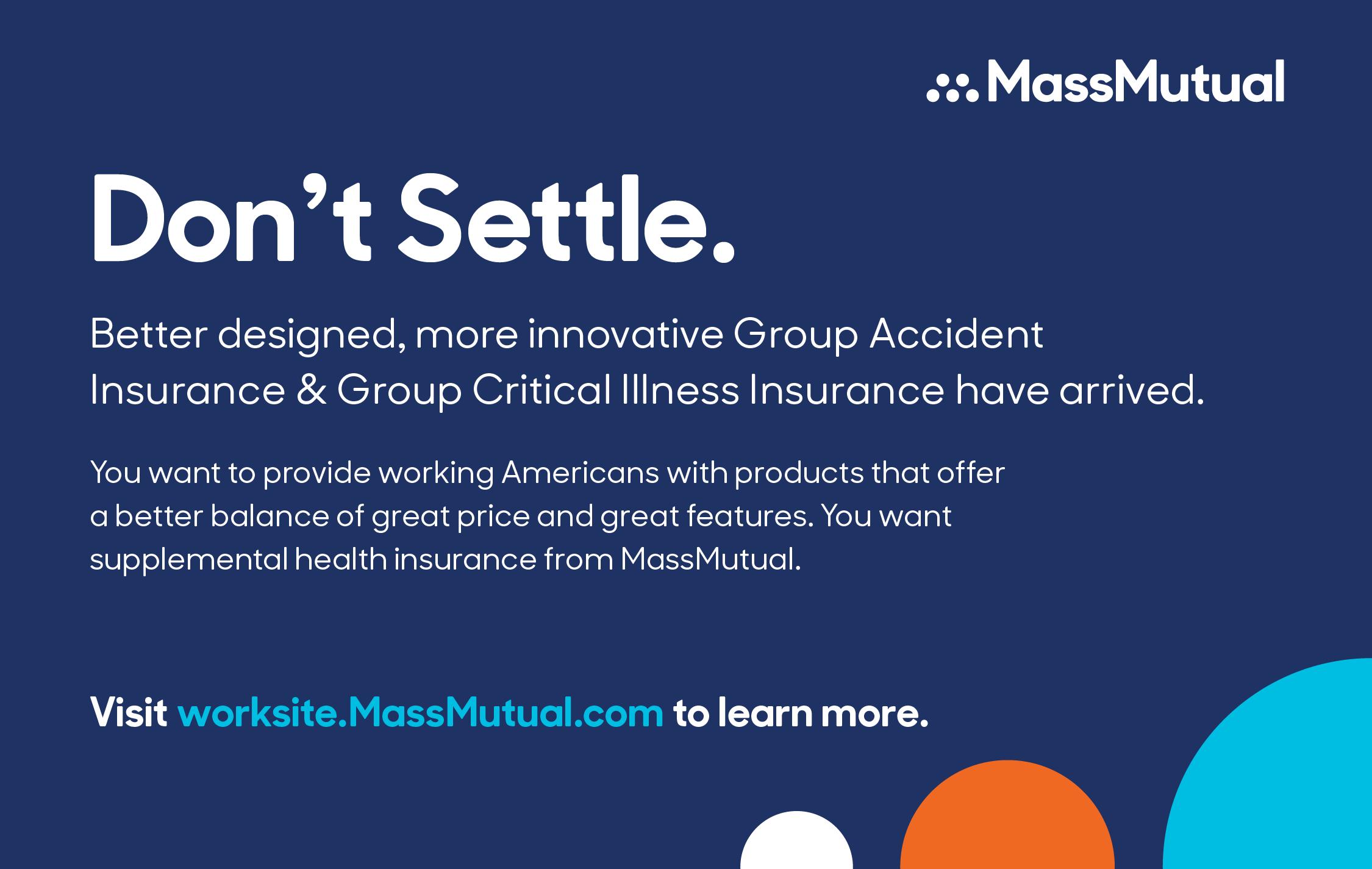

Credit card balances, which now total $1.21 trillion outstanding, grew by $45 billion during the fourth quarter and are 4.0% above the level a year ago.
Auto loan balances rose by $11 billion, and now stand at $1.66 trillion.
Other balances, which include retail cards and other consumer loans, grew by $8 billion
Student loan balances grew by $9 billion, and now stand at $1 62 trillion
In total, non-housing balances grew by $73 billion, a 1 5% rise from 2024Q3.
Many financial wellness tools still treat
benefits decisions in silos asking employees
to pick health plans, retirement
contributions, and savings options
separately, even though they’re all
connected. What employees really need is
what we refer to at SAVVI as "OneWallet,
NextDollar" thinking: a clear, unified view of
how every decision fits together and
guidance that helps employees know exactly
where to put additional savings, whether it's
into a 401k, HSA, additional coverage or
personal savings Integration is key: 79% of
employees say they’d be more engaged if guidance were available year-round, not just
at open enrollment Providing personalized,
year-round guidance helps employees make
confident decisions that truly support their
financial future
Meghan: The market offers a variety of
financial wellness tools, many of which
deliver personalized advice and facilitate real-
time tracking, supported by educational
resources.
However, opportunities for improvement
exist, particularly in the integration of these
tools with broader employee benefits. While
accessibility is at an all-time high,
customization to meet specific employee
needs remains crucial.
Russ: It’s encouraging to see employers recognize the value of supporting employees’ financial wellbeing Many are taking a more holistic approach by integrating financial
education and practical tools with a range of worksite and retirement benefits But too
often, the strategies rely on one-size-fits-all approaches that don’t fully meet employees’
diverse needs More advanced education and tools are needed and must be more readily available to all employees Individual coaching and planning as part of a comprehensive benefits package can help reduce financial stress, increase mental health, and provide real benefit to both the employer and employees.





The common solution has been more financial education and literacy – which we know can help Unfortunately, education alone can feel like an umbrella in a hurricane, and it struggles to scale Employees need more They need to achieve financial resilience: savings, stability, and systems that support them before, during, and after the storm
In this article, we share why and how delivering those systems makes economic sense. And how doing nothing erodes most organizations’ strongest asset – their workforce.
To Lose
Uncertainty is a tax. When a business faces uncertainty, it makes hard, often austere decisions. When an individual faces uncertainty,
it causes “financial precarity” – a term attributed
to the research from University of Pittsburg Katz
School of Business Professor Carrie Leana
Since a financial precarious person’s working
memory – a cognitive function – is
processing how to juggle upcoming bills with their own job uncertainty and family
obligations, their brain is literally paying less
attention to the job at hand, leading to
costly, stress-induced mistakes
Physical health suffers too. A study from the
2008 Global Financial Crisis found that
worsening financial situation amidst
economic uncertainty was a strong predictor
of worsening physical health.
How does that show up? If an employee
can’t pay a $400 emergency expense, it
doesn’t stay neatly contained in their bank
account That strain shows up in every part
of their life – from missed or skipped doctors’
appointments to unfilled prescriptions to anxiety and mistakes at work All of which
eventually lead to costlier claims and
premiums


Mental health also takes a hit The research is clear: employees are reporting higher stress, more anxiety, and less capacity to focus or engage at work
And so when employees are forced to choose between a prescription and a utility
bill, between a student loan repayment and
physical therapy, they’re not building a
future – they’re just making it to Friday.
Employers as a Stabilizing Financial
Force
In an uncertain world, stability is magnetic.
Employees crave it. Economies depend on it.
Employers have a real opportunity to be the
stabilizing force that employees are seeking.
A reliable paycheck is only a part of the
solution. Employees are looking to their
employers for ways to lessen their overall
financial precarity
Specifically, employees need and want
access to tools that create real financial
breathing room that lets them navigate life’s
inevitable and immediate ups and downs
Today’s standard package comes with
market pay, a healthcare plan, and a
retirement plan But are those tools enough
to make someone less financially
precarious?
Forward-thinking employers are starting to
leverage a modern framework to map out
what those tools look like for their specific
workforce, to nudge them from precarity
towards economic security & freedom
The above illustration shows how one can
think about an employees’ financial horizon
over time, from immediate "how do I get
by?" concerns to long-term hopes about
retirement and legacy. It’s a reminder that
financial decisions and considerations aren’t
just one-time events it’s a constant thread
that changes as life progresses.
For employers, building a financially resilient
workforce means offering compensation
and benefits that meet employees where
they are today and where they hope to go
tomorrow That could mean emergency savings accounts to handle the unexpected, financial coaching or certifications to boost mobility, and retirement solutions that help people dream about and plan for the future
A well-rounded benefits package isn’t just about checking boxes; it’s about creating a
path toward lasting financial security, mobility, and freedom
And it can vary by industry or the
organization itself. So the new standard package may mean technology companies
offer tuition reimbursement, while quick
service restaurants offer quicker access to pay.
But across all industries and incomes, the
focus on emergency savings has never been
higher – and it makes sense as the primary
way to build a financial resilience and foster
financial confidence.
Why Workplace Emergency Savings
Programs Work
An employee’s financial well-being is shaped
by their life circumstances and dreams.
Everyone will need emergency savings, and
they also have big milestones that cost
money – personal and financial goals that
they want to accomplish. Not taking those
milestones into account today only creates
another kind of financial emergency
tomorrow That’s why a goal-based savings
approach to emergency savings is so
powerful: they meet people where they are
in their journey, not where we assume they
should be as a number
It’s built for real life. Employees aren’t
saving for abstract ideas – they’re saving
for a car repair, a new apartment deposit,
a medical bill, and holiday gifts for their
kids
It’s flexible. Unlike 401(k)s or other tax-
deferred accounts, employees can
withdraw without penalties when life
demands it.
It’s safe. Employees deserve a safe place
to put their hard-earned money, free
from hidden fees, predatory practices, or market fluctuations.
It’s preventative. As highlighted in this
ASPPA article, by offering accessible
liquidity, employers help workers avoid
dipping into retirement funds early,
preserving long-term financial dreams
while meeting immediate needs
The result? A healthier, more secure
workforce that isn’t just reacting to crises,
but proactively preparing for them And
having savings leads to better decisions
about work, health and life
For example, Professor Leana’s research
found that a logistics company whose
drivers participated in a workplace
emergency savings program saw an 87%
reduction in traffic tickets.
In a recent Broadridge webinar, Prof Leana
and Sid Pailla, Founder of Sunny Day Fund,
shared how impactful emergency savings
empower employees to avoid costly debt
and stay afloat during times of financial
crisis. That’s the power of behavioral change.
Sunny Day Fund’s own clients Tom and Sheri
Schrader, owners of Cottage Care (a
nationwide residential cleaning company)
recently said “Our employees can now track
their savings at any given time, withdraw
into their own bank accounts, and earn
incentives to save We believe it creates yet
another point of loyalty with our employees ”
Financial Wellness is Complementary, Not Competitive, to Retirement
A costly mistake that some employers, their
consultants and advisors make is assume
that a focus on short term financial security
means fewer contributions to retirement or
worse retirement metrics This couldn’t be farther from the truth
Firstly, financial resilience may have multiple support layers: financial coaching, debt management support, emergency savings, retirement savings, and more – much like the earlier illustration. Many are already investing in a variety of these solutions. But the place to start is listening to the employees. Understanding what they need today and where they dream of going tomorrow ensures that the benefits actually deliver the desired outcomes.
Secondly, a more comprehensive financial
wellness strategy actually creates better
results for retirement plans, just like with healthcare For example, when someone
builds up a $1,000 in emergency savings,
they’re half as likely to tap retirement
savings for costly loans and early
withdrawals Other employers have actually
reported an increase in retirement
participation and contributions
And finally, employers and consultants alike
have defaulted to financial education and
advice for action As shared earlier, we know
that’s helpful but not enough Consider the
conversion rate of an education-related
program activating ~4% of the population
towards new savings or other financial
actions, versus a dedicated emergency
savings program achieving 40%-60%
participation.
Why is that? When employers integrate
savings directly through payroll,
automatically open a high-yield workplace
emergency savings account in seconds, and
reinforce new savings habits with company
contributions, they remove barriers and
make lasting behavioral change possible –
just like they do with retirement savings The
same goes for college debt repayment or
other financial commitments So advice is
essential, but it must be paired with the
resources to act on it

Rachel Fox - Vice President, S
Leading Through Uncertainty Requires
Action
Employees are plagued with economic uncertainty and are looking to their
employer – their trusted source for their
paycheck – for help Employers don’t have to
solve every financial problem their
employees face, but they can offer
meaningful benefits that remove barriers,
automate actions, and spark momentum
Behavior change happens when the path is
made easier
Employees are navigating an environment
where uncertainty is the only constant and
life is not about to get cheaper. From rising
rents and everyday essentials to looming
economic shifts, the pressure is mounting.
But waiting until the crisis hits home is not
an option. Employers who lead now won’t
just support their teams through today’s
challenges they’ll be the ones thriving in tomorrow’s economy

In today’s voluntary benefits landscape, brokers are tasked with more than just spreadsheeting carriers for their employer clients they must also ensure that the carriers they partner with can deliver their products efficiently, flexibly, and reliably For too long, outdated technology has created frustrating obstacles, both for brokers trying to manage plans and for employers and employees using them These challenges, deeply rooted in carrier legacy admin systems, have become almost accepted as the norm But they don’t have to be
Imagine a world where enrolling in benefits is seamless, where systems communicate effortlessly with one another, and where updates and changes don’t cause major disruptions
This isn’t just a dream it’s possible with the right technology. Some carriers are already making this a reality, and brokers who understand and insist on these technologies will be better equipped to serve their clients and solve the industry’s most persistent problems.


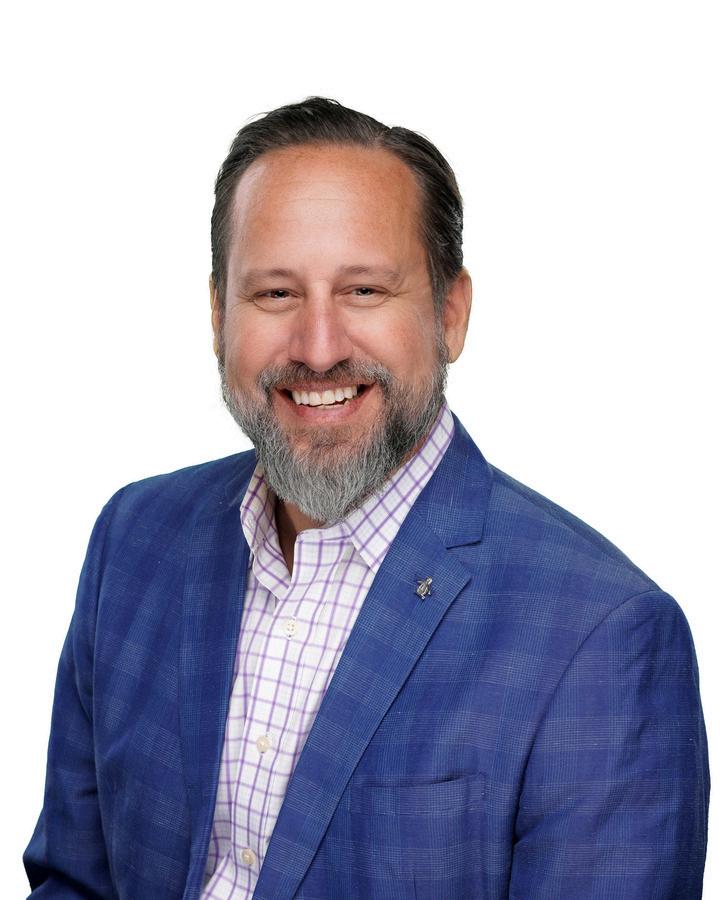
Anthony “Tony” Grosso Head of Growth / GWB Insurance Markets
Tony has over 25 years of hands-on experience leading innovation, business development, product and marketing across all sectors of the insurance industry Tony is leading the GWB market for EIS, a high growth company, helping Voluntary Benefits insurers to achieve their ambitious plans and incredible potential

Let’s face it: we all know legacy systems are holding insurers back
This is why it’s our mission as a coretech supplier for insurers to stop that problem in its tracks. Our cloud-native SaaS platform is built to catapult insurers past old, legacy limitations, and to truly future-proof their technology ecosystem so their business model, product offers, and ways of serving their customers are never held back again, so they can have the truly agile operations of a tech company, rather than a legacy company stuck in decades past Learn more at www eisgroup com

By Heat
be a year that challenges the supplemental health benefits marketplace while also creating opportunities to redefin
d can only continue alongside lower utilization. So, how should the industry determine plan value: by prioritizing the most robust benefits with the lowest premiums or appropriate utilization? I believe the answer is appropriate utilization because it ensures cash benefits are paid to employees when they need it most. However, it remains to be seen whether the industry as a whole will continue to invest in claims integration in 2025 or go further down the path of the race to zero. 3. Regulatory pressures surfaced in 2024 and most likely will continue into 2025 and beyond. In 2024, regulations resulted in a consumer notice that must be i
indemnity plan materials i
come to fruition but have trigge
provide addi
4 Artificial intelligence (
c
effec
promising
r
Paul Hummel

Tim, you are on the brokerage side of the industry and work directly with clients. When it comes to employee wellbeing in the marketplace, what are you hearing and what is trending today?

ng the health of their employees, offsetting other employer costs, or reducing turnover, most are no longer willing to roll out something new just to check the box
Employers are being much more strategic not only about the need, but also the roll out and ongoing support to service solutions ” Tim Schnoor


voluntary/worksite certified.
Course Highlights:
M
e
Understand contract differences
Review implementation and administrati
Obtain crucial compliance insights Ready To Level-Up Your

Voluntary Benefits Know
In horse racing it means dangerous track
conditions and, in auto racing, it signifies that
the race must be stopped immediately for a safety related situation
Some 50 years ago, the United States Air Force
created a special program that is still
continued today, called the Exercise Red Flag
The reasons for starting the program and the
results they have achieved from it provide
some great lessons for relational leaders to apply to their organizations
Near the end of the Vietnam War, the Air
Force recognized that the efficiency and
effectiveness of air combat resources had
diminished greatly since World War II and The
Korean War. This was costly, not only, in
achieving vital results, but also in the loss of
valuable equipment and, even more valuable, the lives of pilots and crew members. The
same study, however, also demonstrated that
the effectiveness of more experienced pilots
and crew was actually better than historical
results
Air Force leaders set out to develop a means of
providing greater experience for their teams
In 1975 the first Exercise Red Flag was held
and it has continued to this day In fact, today
Exercise Red Flag programs are held several
times a year usually based out of Nellis Air
Force Base in Nevada with some taking place
at Eielson Air Force Base in Alaska They
i l d l i b
Here’s how an Exercise Red Flag works
Selected air combat units participate in two
week live combat training which includes
both pre-flight and post flight briefings of Blue
Forces (friendly) and Red Forces (hostile)
teams The teams then engage in realistic
combat scenarios closely monitored and
graded by senior level commanders using
sophisticated computer analysis and
reconstruction of battle plans and actions
They also provide GPS jamming and other
interferences with the participants’ actions
and evasions
The participating military teams have learned,
and continue to learn, a lot about their
equipment, crews, internal strategies and
tactics, as well as, enemy equipment,
strategies and tactics. The Exercise Red Flag
programs (which take place 3 – 6 times per
year) are considered to be more challenging
than actual combat experience, which accounts for why the results have been so
outstanding
Evaluating and responding to Exercise Red
Flag programs have identified key areas for
improvement including:
Equipment Improvements
Design of New Equipment
Refreshing Strategic Plans
Revising Tactical Responses
Improving Crew Training

D
ood of ultimate success by answeri
What additional training and resources do we need?
Does our team have the necessary time bandwidth?
Does this program fit with and contribute to
Will this program detract from other critical activities?
Will this program help our team members to grow?
T
discuss any questions or challenges you (or your clients) may be facing.

link to watch a FREE SAMPLE LESSON about Accidental and Incidental Mentoring recorded directly from the actual RLE progr
nciples can benefit your practice and that of your clients.
Learn More About RLE
Designed to help organizations of all types build a positive work culture that can stand
the test of time and its changing issues
Relational Leadership Experience (RLE)
teaches proven principles and wisdom of leaders from a wide range of experiences over
the past century. It provides a step-by-step
approach for employers combined with
consultative support in designing and
implementing a program with measurable results specific to their organization